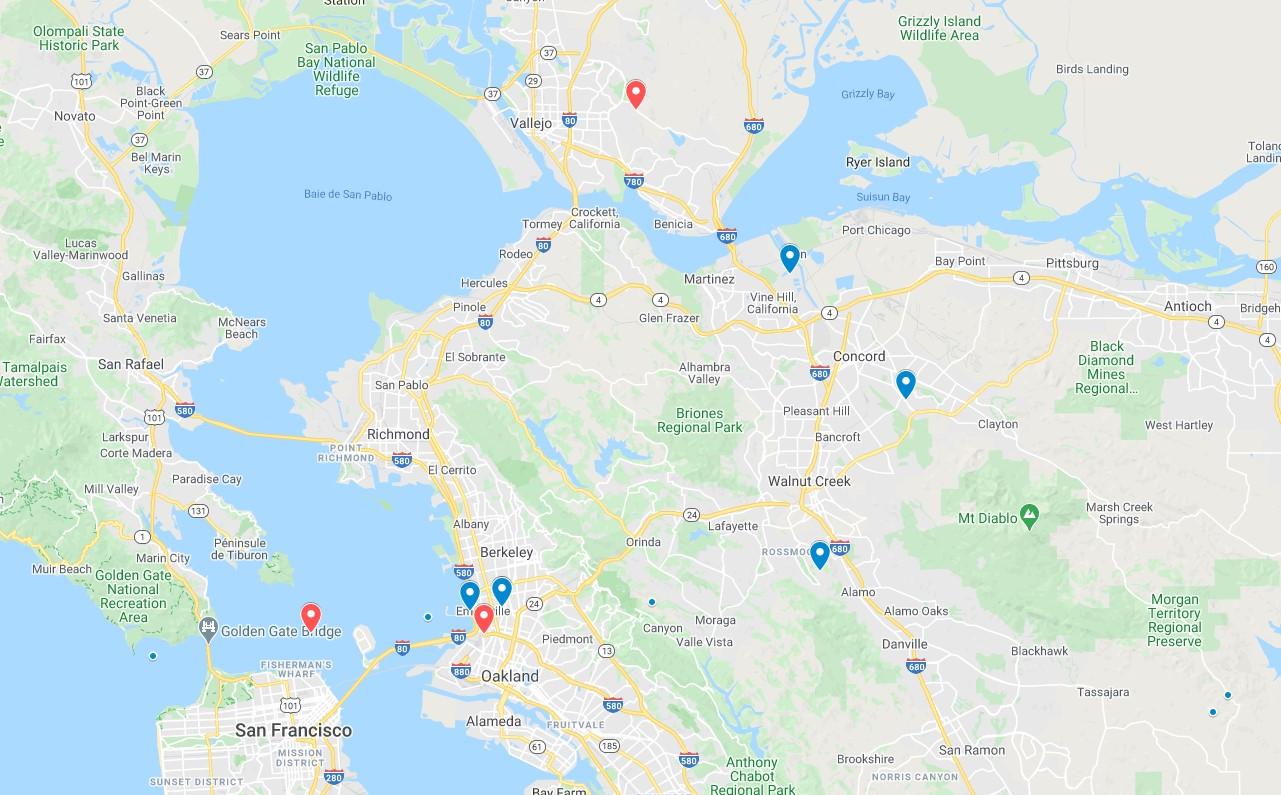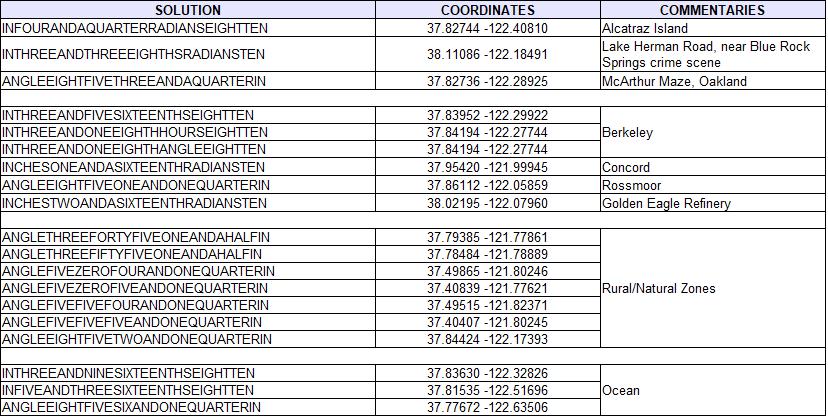Hello all,
Here is a modest attempt to advance a little in the understanding of the famous Z32 cipher of the Zodiac.
As you know, this cipher was supposed to reveal the location of a bomb intended to "anilate a full school buss" and was accompanied by a map which should help in its resolution.
A full decryption of this code is made nearly impossible due to its short length : it only has 32 characters, of which only 3 are repeated. Unlike the Z408 or Z340 ciphers, and if the Z32 is indeed based on an homophonic substitution method, it is almost impossible to detect patterns and therefore to find the right solution.
The starting idea here is very simple : build a large number of plausibles solutions and test them to identify those which satisfy the constraints derived from the following hypothesis :
These last two constraints will help us to find what messages the cipher could contain. Obviously, this method will give several possible answers, but we will see later that they are finally quite few (for those which have been tested, of course).
The idea is therefore to build two portions of cipher based on the following models :
Other patterns are of course possible, but these seem to be simple for a first approach. The solution consists in joining these two portions of code and to test if they respect the constraints of length (32 characters in total) and repeated letters (C, Delta, O).
Note that the precision of the location hidden in the cipher should be of the order of 1km/0.6mi, because the distance is only known with a precision of 1/16 inches (0.4mi with the scale of the map) and I considered that, if minutes are used to express angles, they are only multiples of 5 (wich implies a precision of 2.5°).
In short, this method leads to testing nearly 4 million possible solutions. Of these 4 million, 65 meet all the constraints (0.0017%). 46 of them lead to locations outside the map and are to be eliminated. Among these 19 solutions, 10 are in the ocean or in completely natural/rural areas. So we have 9 potentially viable solutions that are shown on the map below.
I must confess I have a preference for three of these solutions (in red on the previous map) :
Among the six other solutions, five are located in urban areas where it would certainly be easy to find schools nearby given the uncertainties of the measurement : three in Berkeley (three solutions but only two sites, one in Concord, one in Rossmoor). And the last one is located on the site of the Golden Eagle in Avon refinery, East of Martinez.
Below is the full list of the 19 sites: Obviously, it would not be serious to think that this quick review allowed us to find all the possible solutions : but the few solutions that appear with this simplified method already provide some interesting solutions !
The starting idea here is very simple : build a large number of plausibles solutions and test them to identify those which satisfy the constraints derived from the following hypothesis :
So, @oliv92, I like your overall approach here of starting with certain ‘hypotheses’ and experimenting with these as, effectively, secondary (external) constraints. Can I just ask, however, what you think about one in particular that I would regard as key, but which you haven’t included and is not evident in the 19 candidates you arrive at. Specifically, I’m thinking about ‘readability’ – the idea, bolstered by the recent solution of the 340, along with the earlier 408, that we should be looking for a text in an easy, straightforward reading style?
Also, what about ‘ordering’. Isn’t ‘bearing/range’ the expected order?
- Alcatraz Island, corresponding to the solution “IN FOUR AND A QUARTER RADIANS EIGHT TEN” (4″1/4 8:10)”
One more question, if that’s ok. Why, having rejected (fairly, in my opinion) angles in radians, for which you have substituted ones based on time, are you then including the word ‘RADIANS’ in any of your candidate solutions? Shouldn’t you be look for candidates that contain ‘[#]HOURS’?
Thanks.
“This isn’t right! It’s not even wrong!”—Wolfgang Pauli (1900–1958)



